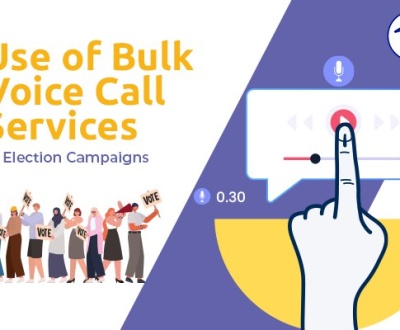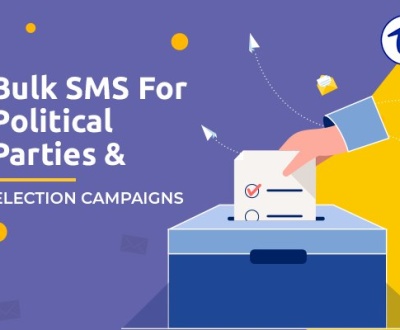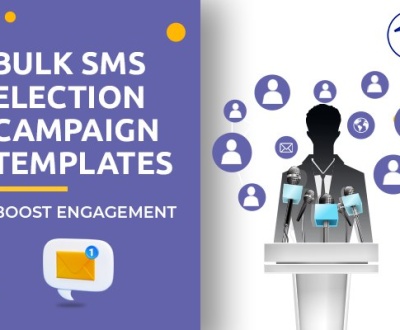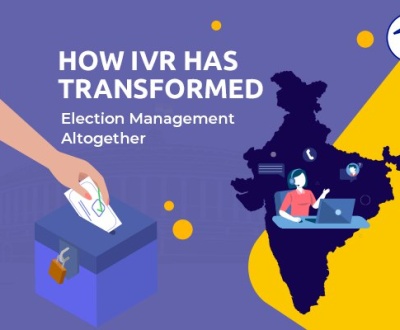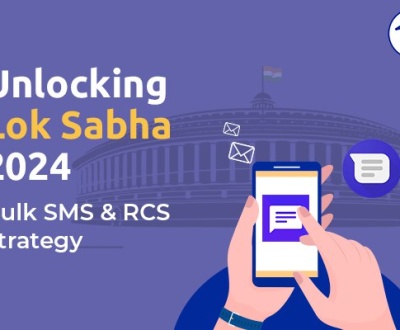IVR Solutions: Empower Your Political Voice Broadcasts
- April 18, 2024
- IVR
As political landscapes evolve, so does the need for more sophisticated communication technologies. Political voice broadcasting, particularly through Interactive Voice Response (IVR) systems, has become a cornerstone in election campaign strategies.
This article delves into how IVR technologies are shaping political communication in India, backed by compelling examples and insights into the effective organization of election management.
The Evolution of Political Communication in India
In the early years post-independence, political communication was predominantly face-to-face or through printed materials. By the 1980s and 1990s, the introduction of television and radio ads brought new dynamics to campaign strategies, widening reach but also increasing campaign costs.
The 21st century introduced a digital revolution, opening new vistas for political communication through the internet, social media, and mobile technology. IVR systems have played a pivotal role in this transformation. Proactive Digital, with over 15 years of experience in SMS, voice, and digital marketing services, highlights how voice broadcasting solutions have become integral to effective political campaigns.
Understanding Political Voice Broadcasting and IVR
Voice broadcasting is a mass communication technique that allows political parties to send recorded audio messages to thousands of voters simultaneously. This can include campaign messages, voting reminders, or updates on political agendas.
IVR technology enhances this process by adding interaction capabilities, enabling recipients to respond using their keypad (e.g., press 1 to support, press 2 for more information), thereby engaging them directly and measuring campaign effectiveness.
Strategic Applications in Election Campaigns
Political voice broadcasting serves multiple strategic purposes:
- Voter Mobilization: Automated calls can remind people to register to vote or inform them of polling dates and locations, increasing turnout.
- Public Opinion Polling: IVR systems can conduct surveys, gathering crucial data about voter preferences and concerns, which can be used to tailor campaign messages.
- Crisis Communication: In times of misinformation or rumors, quick and direct communication through voice broadcasting can help clarify issues and maintain public trust.
Compelling Examples of Voice Broadcasting Impact
- Regional Elections: During recent state elections, a major political party utilized IVR technology to send personalized messages from the party leader to millions of potential voters. This strategy not only increased voter engagement but also boosted rally attendance by over 40%.
- Voter Feedback Collection: Another party used IVR systems to collect voter feedback after major policy announcements. The feedback was then analyzed to adjust the campaign’s messaging and strategies, reflecting the voters’ sentiments more accurately in subsequent communications.
- Emergency Updates: During a natural disaster, a candidate was able to quickly broadcast safety information and details about emergency services available to constituents, demonstrating effective crisis management and concern for public welfare.
Pros and Cons of Political Voice Broadcasting
Pros:
- Wide Reach: Voice broadcasting allows campaigns to reach a large number of people quickly and efficiently, even those without internet access.
- Cost-Effective: Compared to traditional door-to-door campaigns, voice broadcasting is less labor-intensive and can be more cost-effective per contact.
- Personal Touch: Audio messages can be personalized, making them more engaging than text-based communications.
Cons:
- Regulation Compliance: Political parties must navigate regulations concerning robocalls and ensure they have proper consent to contact individuals.
- Voter Fatigue: Overuse of voice broadcasts can lead to voter annoyance, potentially alienating the electorate.
- Technical Limitations: While IVR allows for interaction, the complexity of messages that can be communicated is less than in direct human interactions.
Conclusion
As we approach more technologically sophisticated election cycles in India, political voice broadcasting, especially IVR systems, stands out as a vital tool in the arsenal of political parties. These systems not only streamline communication but also enhance voter engagement through direct and personalized messaging.
The ability to quickly disseminate information and gather instant feedback makes voice broadcasting an indispensable strategy for modern political campaigns.
With thoughtful implementation and adherence to regulatory standards, political organizations can maximize the impact of their outreach efforts, fostering a more informed and participatory electoral process.
As technology evolves, so too will the strategies that drive political communication, making voice broadcasting a perennially relevant tool in shaping democratic outcomes.
FAQ Section
Q1: How do political parties ensure compliance with legal regulations in voice broadcasting?
A: Parties must adhere to national telecommunications guidelines and obtain consent from individuals before sending voice broadcasts. They also need to provide clear opt-out options in their communications.
Q2: Can voice broadcasting systems integrate with other campaign tools?
A: Yes, modern IVR systems can integrate seamlessly with CRM platforms and other digital tools, allowing for synchronized campaign management across various media.
Q3: What is the typical response rate to political voice broadcasts?
A: Response rates can vary widely but typically range from 5% to 20%, depending on the relevance and timing of the message.
Q4: Are there any examples of voice broadcasting backfiring?
A: Yes, excessive or poorly timed voice broadcasts can lead to public annoyance. It is crucial to balance frequency and content to maintain voter engagement without overwhelming them.
Q5: How can the effectiveness of voice broadcasts be measured?
A: Effectiveness can be measured through engagement metrics such as response rates, follow-up actions taken by recipients (like attending events or donating), and through pre- and post-campaign opinion polls.





